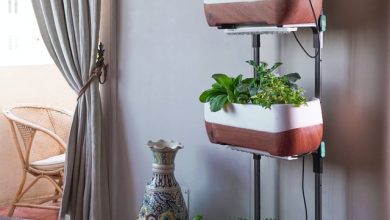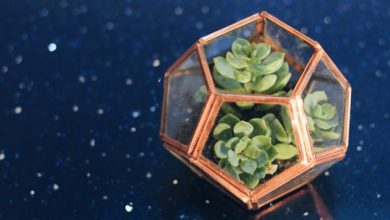House Plants that Improve Air Quality

Indoor air quality can suffer from a lack of ventilation, but plants can help to address that. Plants can absorb most pollutants that are in the air and are the best way to restore air inside buildings to its outdoor counterpart.
Plants also cost very little to upkeep. Plants require soil, water, and sunlight. This can be an inexpensive way to clean the air inside your home without purchasing expensive equipment.
Harmful Substances
The American Journal of Public Health found that 90 percent of air pollutants in buildings stem from indoor sources. Plants can help eliminate these materials and improve overall health. They capture harmful substances, such as carbon monoxide and ammonia, and transform it into something beneficial.
Plants absorb carbon monoxide and convert it into carbon dioxide through a process called oxidation. The plant harbors that CO2 for energy, and through photosynthesis, releases it back into the environment as oxygen. Also, ammonia can be recycled into amino acids for plants. Ammonia is a naturally occurring gas, in which humans are commonly exposed to low levels of in the air. High concentrations can cause severe damage.
NASA has done research on the less-obvious benefits of having house plants. It recently made a full list of chemicals that house plants have been known to remove from the air. These chemicals include:
Trichloroethylene – This is something that boosts a person’s mood, however, it has some serious health risks. This chemical is associated with headaches, nausea, and vomiting. Plants known to eradicate this chemical are Boston ferns, weeping figs, devil’s ivy, and chrysanthemum.
Formaldehyde – If encountered in high doses, this can cause nose and mouth irritation or even swelling in the larynx and lungs. Date palms, Chinese evergreens, bamboo palm, and spider plants are good ways to battle this substance.
Benzene – This chemical can cause eye irritation, headaches, confusion, and accelerated heartbeats. Benzene can be counteracted by Baberton daisy, dracaena, English ivy, snake plants, and peace lily.
Ammonia – Ammonia, too, causes irritation in the eyes and throat. Peace lily and chrysanthemum are used to balance this chemical indoors.

NASA Loves Plants
The National Aeronautics and Space Administration puts plants in the space stations after the agency discovered their impact on air quality. NASA has carried out extensive research on the ways plants can improve air quality. It is particularly important to this agency, as one would guess, because there is no air in outer space. Astronauts depend on air quality methods that keep them healthy outside the atmosphere.
Some of NASA’s findings can be applied to households, big and small. In studies of air and water purification, it was found that plants are able to filter the air when they, too, are feeling some ventilation. NASA’s Bill Wolverton concluded that the living bacteria with the soil of house plants contribute to the plant’s ability to circulate air. As the soil around the plant’s roots is slightly shifted by the bacteria, roots are able to get some air circulation, too.
Through his research, Wolverton also found that plants are picky about the air pollutants they choose to pull from the air. For the best results, purchase a variety of indoor house plants and set them within 100 square feet of each other.
Other Plant Research
India has also done some extensive research on the impact houseplants have on air quality. One study, conducted by the Indian government, took place over the 15 years in a 25-year-old building using 1,200 house plants. It was performed by the Paharpur Business Center, and what they found was a tad alarming.
It found that when plants were added into an indoor environment there were 34 percent fewer respiratory ailments in the building, along with 52 percent less eye irritation and 24 percent fewer headaches. The Indian organization also found that this test building, over the course of the study, became less reliant on heating and cooling systems to treat the air. This resulted in 15 percent energy savings.

Plants Great for Air Quality
NASA is also a go-to in the houseplant world, dictating what plant is good for what type of environment. The agency has been studying plants for 20 years and found that these are some of the plants that are especially good at purifying the air.
Spider plants – The plant has long, thin leaves. It’s a bush-type plant, with many leaves sprouting from its stems. These small plantlets are light green, with a white stripe down the middle. This plant is attracted to carbon monoxide.
Parlor palm – The Parlor palm is made of the frond, or the finger-like foliage. Fronds grow from the crown of the plan. This plant has been called a “cancer-causer remover” by EcoWatch. It, generally, targets most air toxins.
Red emerald philodendron – Thick, heart-shaped leaves, which can be mistaken for a small pothos, cover this species of philodendron. This plant also is not particularly picky with what toxins it chooses to absorb.
Dragon tree – Long, skinny leaves droop over this plant’s think stalk. It is known for being an overall easy plant to maintain. Also, it removes two substances related to breast cancer, xylene and trichloroethylene.
Gerbera daisy – Cute and colorful, this flower will help remove most toxins.
Kimberly queen fern – This plant draws formaldehyde from the air inside your home. Some have called it the best natural humidifier.
Golden pothos – This plant is easy to maintain and helps remove carbon monoxide, benzene, and formaldehyde from the air.
Aloe vera – Aloe is a fan favorite. This plant is great for muti-use. You can use this plant to treat sunburn, but also to treat the formaldehyde in your home.
Arcea palm – Arcea palms a little more difficult to maintain than other plants on this list. However, it is great at removing any and all toxins in the air.
Elephant ear philodendron – This plant looks like the animal it is named after. Big, thick leaves hang over stems and cut all traces of formaldehyde from the home.
Lady palm – This plant, with long, strong leaves and a robust stalk, is also great to use to eliminate cancer-causing elements in the air.
Bamboo – You may have received this as a housewarming gift or from one of your co-workers. Hold on to this plant, as it removes benzene, trichloroethylene, and formaldehyde.
Keeping an Air Purifying Plant
This choice can be as simple as buying an aloe plant and sticking it on your kitchen table, or not. Dealing with plants can be a tricky subject, sometimes. It is important to consider some factors before rushing out to the store.
If you live with other people, they could be allergic to the plant you want to purchase. Before making a decision on the plants that will share common areas, ask the people in the building if they have allergies. This helps avoid any issues. For example, if someone in the building suffers from hay fever, or allergic rhinitis, you may want to use caution when at the plant store.
Plants will increase the humidity in your home, depending on how many you introduce into your space. This is great for those who spend money on air humidifiers, as the plants may also reduce costs. Keep in mind, however, that increased humidity tends to exacerbate moisture and mold issues in buildings.
Another caution is the toxicity of plants. Some plants can not be ingested by humans nor animals, and it is critical to keep them out of reach. One way you can do this is to simply move the plant to a harder-to-reach place or choose plants that won’t cause too much interference. For example, pollen from flowers can cause allergic reactions, though not always toxic. If you are prone to allergic reactions during spring, it may be best to stay away from flowering plants.
Plants in LEED
Leadership in Energy and Environmental Design is a United States Green Building Council certification for buildings. A building is awarded points during an assessment of the facility based on several sustainability categories. One of those categories is the quality of the indoor environment. Indoor plants cannot guarantee that a building will get points for indoor environmental quality. However, there have been some findings on the best ways to accumulate credits using plants.
Biofilter walls, which is a wall filled with hydroponic plants, are integrated with ventilation systems to improve air quality. When air goes across the biofilter wall, the plants in turn capture and remove pollutants. Similarly, biophilia is a way to recreate nature inside. A little bit of interior landscaping can go a long way to improve indoor air.
Plants also help with energy and water conservation. As stated earlier, plants have been found to improve the efficiency of HVAC systems. This is largely due to the plant’s ability to reduce the weight of ventilation on fans and other forced-air filters. Similarly, as also stated, plants boost humidity. This added moisture in the air can help conserve water in buildings and areas where residents are dependant on humification in order to be comfortable in their homes.
Sources
Matter of Trust. “How to Improve Indoor Air Quality with Plants”
https://www.matteroftrust.org/how-to-improve-indoor-air-quality-with-plants/
Rodale Wellness (2016). “20 Plants That Improve Air Quality in Your Home” EcoWatch https://www.ecowatch.com/healthy-swaps-for-everyday-food-and-drinks-2641670694.html



